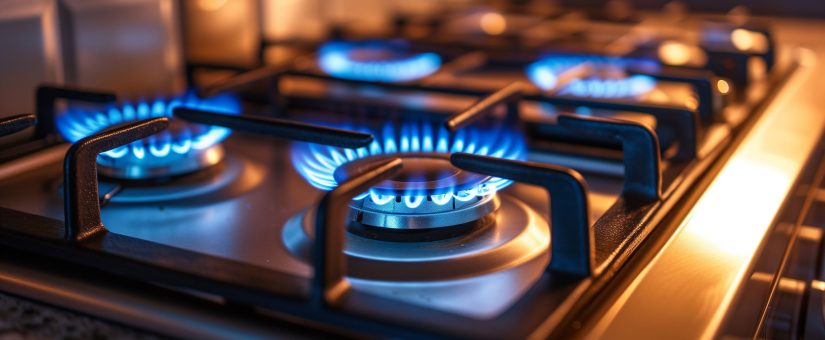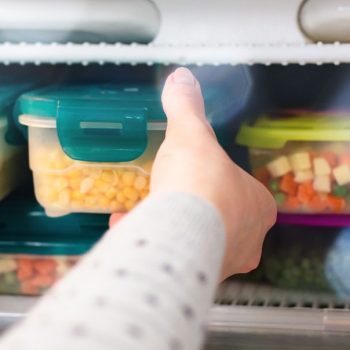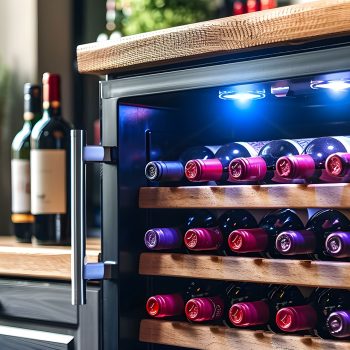
The Range of Choices
Culinary enthusiasts and busy families in the Sacramento metropolitan area strive for efficiency and excellence in their kitchens. That includes the range or stovetop, which is the cooking surface over your oven. If it’s not above an oven, then it’s known as a cooktop, but it’s basically the same thing. Common choices include gas, electric, and induction models. Which one is best for you? Let’s lay out the pros and cons of each to help you tailor your kitchen to your cooking style, budget, and aesthetic preference.
Gas Ranges
Gas ranges are a classic design, recognized by their iconic ring of blue flames under a skillet or saucepan. They typically have 4 or 5 burner elements covered by cast iron metal grates for protection and heat conduction.
Pros:
- Instant heat control allows you to transition from a rolling boil to a simmer in no time.
- Heat distribution allows for many cooking techniques, including boiling, simmering, searing, or sautéing.
- Gas ranges accommodate all types of cookware with ease.
Cons:
- The burner grates protecting the burner elements are heavy and may require more effort to clean.
- Installation requires a gas line, potentially limiting placement options.
- Gas flames present a potential safety risk.
Research from health experts indicates that gas stovetops may allow minor leaks of benzene and other compounds into the home. This article provides more information including helpful tips when using your gas range.
Electric Coil Ranges
Electric coil ranges are a reliable workhorse for the kitchen. Electricity heats the coil, thereby heating the cookware. Later models offer smooth-top surfaces that are easier to clean and have more aesthetic appeal.
Pros:
- Since the entire element heats up, it provides a stable cooking surface for the bottom of pots and pans.
- Straightforward operation with minimal learning curve.
- Often one of the least expensive models.
- Installation does not require a gas hookup.
Cons:
- The heat from electric coils is slow to adjust compared to the instant control with gas or induction models.
- Electricity is required.
- With the element exposed, the risk of burns is higher. Smooth-top models counteract this con, but they are also more prone to scratches or cracks.
Many homeowners use solar panels to reduce how much electricity their appliances take from the grid, thus reducing electricity costs. This also applies to induction ranges.
Induction Ranges
The latest contender in cooking ranges uses magnetic induction. Generated from a pulsating magnetic field, electromagnetic energy excites molecules in the cookware. The interaction between those molecules creates heat to cook your food.
Pros:
- Induction ranges cook faster and use less power than electric ranges
- The surface cools quickly, reducing burn risks and increasing safety.
Cons:
- Induction ranges require magnetic cookware, such as cast iron or magnetic stainless steel. Glass, copper, and aluminum won’t work.
- These ranges are typically more expensive due to advanced technology.
If you are used to gas or electric ranges, there may be a learning curve involved with induction. The heating takes less time and more attention, making it easier to overcook some dishes.
Selecting a Range
When choosing the perfect range for your Sacramento home, consider not just the initial cost, but also the long-term implications for your energy bills, your cooking habits, and even the layout of your kitchen. Whether you’re considering gas, electric, or induction, River City Appliance has the knowledge and experience to help you make an informed decision. Should you need maintenance or repair down the line, remember that River City Appliance is always here to ensure your kitchen appliances keep up!
- Posted by River City Appliance Blog
- On May 16, 2024
- 0 Comment




0 Comments